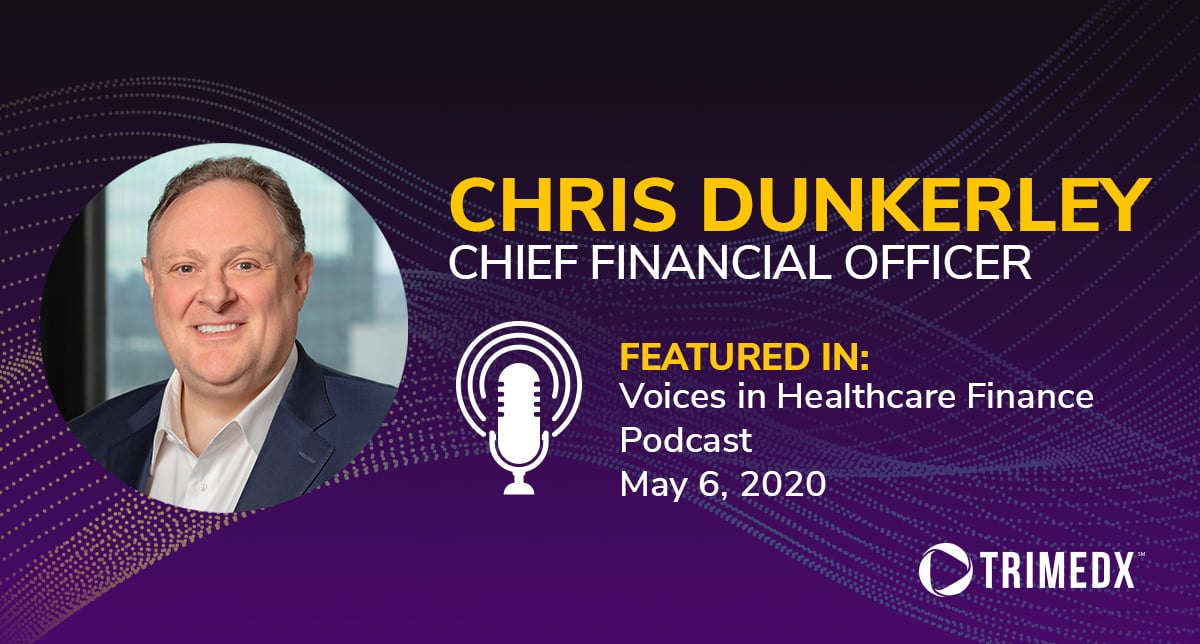Chris Dunkerley was recently featured on HFMA’s Voices in Healthcare Finance Podcast, to hear the full interview click here. Below is an excerpt of that discussion.
COVID-19 has brought unique financial challenges to hospitals and health systems, including clinical asset management. When thinking about your clinical assets, it has always been important to ask yourself the following questions:
- How many clinical assets do I have?
- How many do I need?
- How do I know that is the right number?
These questions, while always important for health systems to consider, are more important than ever in the era of COVID-19. While hospitals are familiar with managing peaks and troughs in the supply and demand of their services, now we must prepare for and face the possibility of those peaks and troughs being much higher and lower than they’ve ever been before. Which leads to a fourth question:
4. How do the extreme peaks and the associated medical equipment needs impact our financial situation?
TRIMEDX has identified, based on data from over 3.4M clinical assets across 3,000 plus client sites, that utilization of clinical assets normally runs between 40-50%. Clearly, during peak response to COVID-19, these numbers will have changed, especially with the challenges associated with elective procedures and the need for ventilators. How health systems manage these fluctuations and the associated financial implications will pose a unique challenge for the future.
One way to look at this is from a short and long-term perspective, approximately six months. There are many things that are currently unclear, particularly as it pertains to new business models and reimbursement of health services. One thing that is clear is that many of these issues will need to be addressed before health systems are able to effectively plan their clinical asset management strategy. Particularly in a time of crisis, clinical asset discussions can be highly emotional. This is where data is critical for objective conversations to support request and make informed decisions. By removing the emotion from the equation and relying on the data, we can identify where there are clinical assets needs or where a health system may just require access to additional assets.
Access to clinical assets may become a key factor in the establishment of two financial models, one that addresses the needs and use of equipment during normal peaks and troughs, and a second that addresses access to clinical assets due to circumstances outside these normal patterns, as was the case with COVID-19. The challenge is who will in turn support this second business model? This may be a model that will require support from either the government or the insurance industry in response to emergency preparedness during a pandemic.
Health systems can play a vital role in driving this conversation. Having access to utilization data on your clinical assets will, again, remove the emotion from the conversation and allow for the presentation of fact-based decision making.
Another way providers can come together in support of a new business model is to work collaboratively within their own system. Reallocating equipment across hospital sites can be challenging. What we saw during the peak of this pandemic reinforced the concept of “hoarding” medical equipment “just in case”. And to take the forward-thanking collaborative conversation of reallocation to the state level or even the national level will certainly be a challenge that will require a larger discussion. Clearly health systems will need to account for both the needs of the large, urban hospitals as well as the smaller rural hospitals. But with proper planning, they will be able to identify and prepare for what they actually need, what they require access to and how will they create a proposal that allows each location to act, should another pandemic occur.
As far as how this initiative will be funded, there are many schools of thought on the subject. There are many parties that have a vested interest in planning properly for a future health crisis, including insurance companies, Medicare, Medicaid as well as the state and federal government. This is a bigger issue than health systems on their own may be able to solve so this level of collaboration will likely be critical. Planning at an individual health system of site level is likely not the answer, given the complexity of the logistics involved in executing such a plan. Many factors will need to be considered, such as whether the equipment is fit for purpose as well as how to get it where it is needed and in the right timeframe. Economies of scale dictate that you will achieve more with more.
In short, to develop this second model, multiple factors will need to be considered including logistics, access, utilization. Armed with the right data, health systems will be able to accurately predict what they will actually need in the event of another health crisis. As we emerge from this current crisis, it is evident that planning needs to be done for the future. And clinical asset management is a key part of that.
To learn more about how TRIMEDX can help prepare you for the future of clinical asset management, request a Current State Assessment from our team today.
